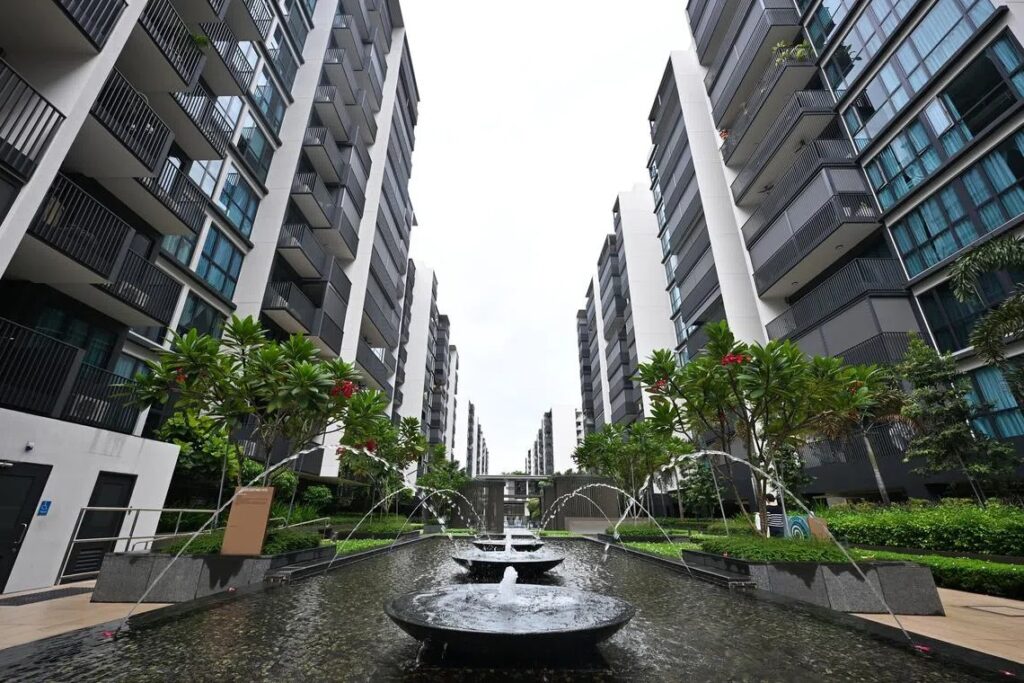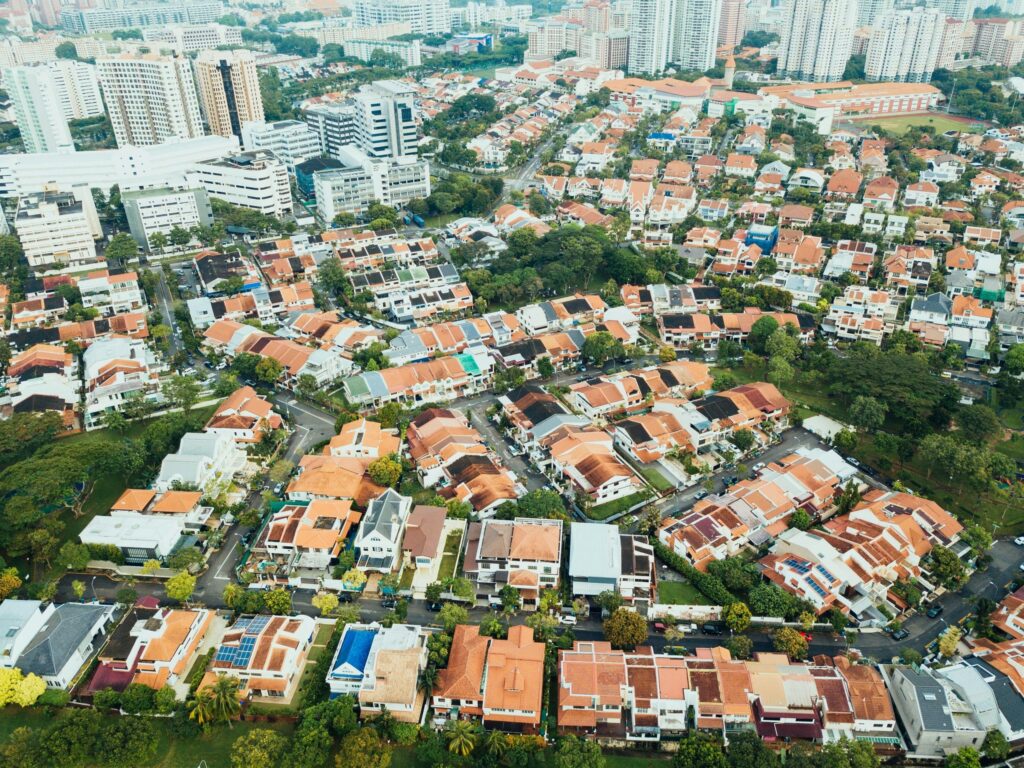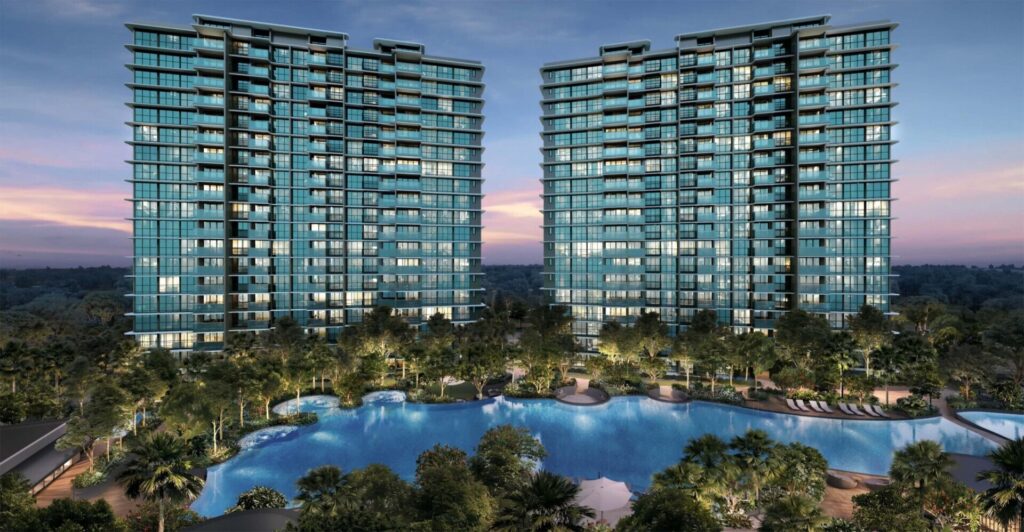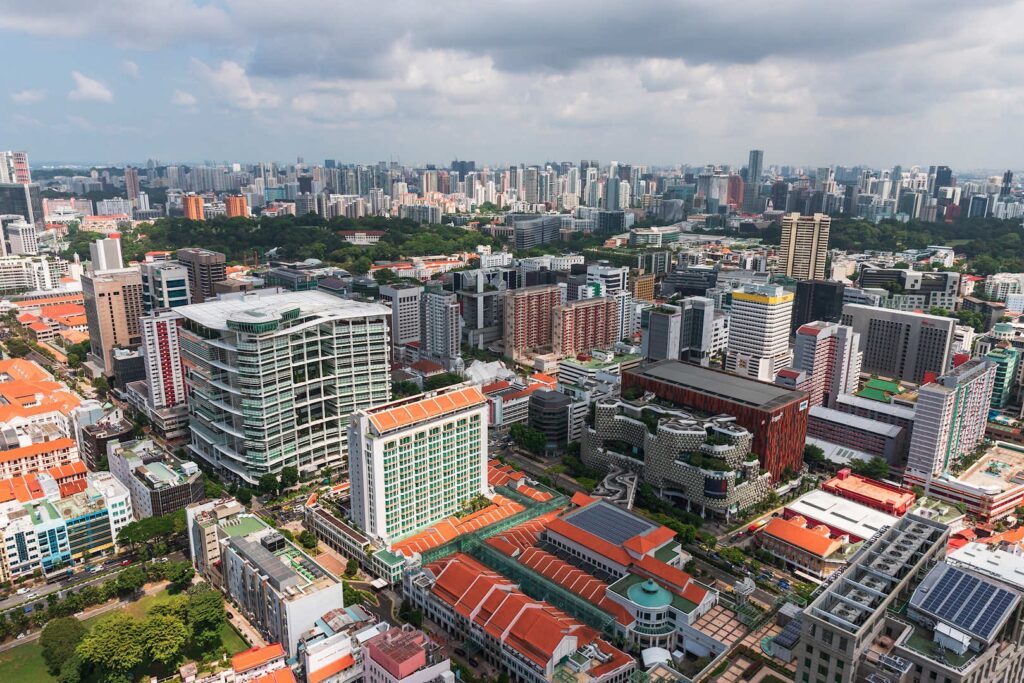Singapore’s property market is evolving. For years, the spotlight has shone brightly on the city’s central regions, where luxury condominiums dominate the skyline and price charts. But in 2025, attention is shifting. Suburban condominium projects are stepping up, offering more than just affordability – they’re redefining what urban living can look like when space, community, and convenience come together outside the traditional core.
More homebuyers are now exploring suburban neighborhoods, driven by improved transport links, modern amenities, and a growing sense of balance between city access and quality of life.
Developers, sensing this shift, are investing heavily in integrated developments, well-designed layouts, and lifestyle features that would have once been reserved for downtown addresses.
A New Wave of Suburban Appeal

Singapore’s suburban areas were once seen as too quiet, too far, or too limited in amenities. That reputation is fading fast. The rise of MRT expansions, new commercial hubs, and government-led town redevelopments has changed the game.
Places like Tampines, Jurong, Woodlands, and Punggol are now buzzing with life, commerce, and opportunity. With malls, healthcare facilities, parks, and schools nearby, suburban condos now rival their city-center counterparts in convenience while providing more space and a gentler pace.
Developments like Pinery Residences show how suburban living in Singapore has evolved into something modern, connected, and full of life.
For families, the attraction is clear. Larger units, better air, proximity to schools, and green surroundings make suburban projects ideal for raising children.
For younger professionals and investors, the appeal lies in growth potential – many suburban estates are slated for transformation under the URA Master Plan, which continues to push new business and lifestyle nodes beyond the city center.
Why Suburban Condos Are Gaining Ground
The surge in suburban condo launches isn’t just about cheaper land. It’s part of a broader lifestyle realignment. Singapore’s workforce has evolved post-pandemic, with hybrid work models allowing people to live farther from the central business district without compromising daily routines.
Projects like Narra Residences show how suburban living can blend nature, comfort, and accessibility without losing the sophistication buyers expect.
Developers have adapted quickly. They’re building communities that reflect what modern buyers value most: privacy, sustainability, and shared amenities. Key reasons driving demand include:
- Affordability and Value: Suburban condos generally offer more square footage for the same investment compared to central locations.
- Transport Connectivity: The Thomson-East Coast and Jurong Region Lines have shortened travel times and improved accessibility across previously distant areas.
- Lifestyle Hubs: Many suburban estates now host major malls, food clusters, and recreational zones that rival central attractions.
- Urban Decentralization: Initiatives like the Jurong Lake District and Punggol Digital District are creating new economic centers outside the CBD.
This combination of policy, infrastructure, and private development has made suburban living not just a fallback but a smart, forward-looking choice.
The Changing Face of Suburban Condo Design

Gone are the days when suburban projects were simple, cookie-cutter developments. Today’s condos are designed with a stronger sense of identity.
Developers are introducing mixed-use concepts, community-oriented spaces, and technology-driven features that elevate everyday living.
1. Smart Living Features
Digital integration has become standard. Homeowners can now manage lighting, security, and climate control through mobile apps.
Smart parcel lockers, facial recognition entry systems, and EV charging bays are increasingly common.
2. Resort-Style Amenities
Suburban projects now boast full-fledged lifestyle offerings:
- Infinity pools with panoramic views
- Co-working lounges
- BBQ pavilions and outdoor dining zones
- Jogging trails and wellness gardens
- Pet-friendly spaces
It’s a deliberate effort to foster community living while maintaining privacy.
3. Eco-Friendly Design
Sustainability is central to modern suburban developments. Developers are incorporating solar panels, rainwater harvesting, and green facades to meet Singapore’s Green Mark standards.
More projects feature sky terraces, energy-efficient lighting, and recycling facilities as part of their design DNA.
4. Family-Centric Layouts
The suburban buyer demographic includes families looking for long-term homes. Developers are offering larger 3- and 4-bedroom units, flexible study corners, and multi-generational designs that support extended living arrangements.
Key Growth Areas to Watch

Jurong Lake District
Jurong’s transformation into Singapore’s second CBD is one of the biggest catalysts for suburban condo growth.
With the Jurong East Integrated Transport Hub, new office spaces, and the upcoming Cross Island Line, connectivity is about to rival downtown levels. Condos around Lakeside and Chinese Garden MRT stations are seeing renewed interest from both local and foreign buyers.
Tampines and Pasir Ris
The East remains a favorite for families who value coastal proximity and mature infrastructure. Tampines North’s new projects benefit from established schools, retail clusters, and the convenient PIE and TPE links.
Pasir Ris, with its integrated transport hub and park connectors, offers an attractive mix of sea breeze and suburban calm.
Punggol and Sengkang
The northeast corridor continues to shine as a model of planned suburban development. The Punggol Digital District is turning the area into a tech and innovation hub, while waterfront projects provide a unique residential appeal.
Woodlands
Often overlooked, Woodlands is now emerging as a strategic northern gateway. The upcoming Johor Bahru–Singapore Rapid Transit System (RTS) will redefine cross-border commuting, and new condo launches are capitalizing on that connectivity boost.
Who’s Buying into the Suburban Story

The suburban condo market attracts three main groups of buyers:
| Buyer Segment | Motivation | Typical Unit Choice |
| First-time homeowners | Seeking affordable entry into private housing | 1–2 bedroom units |
| Upgraders from HDB | Wanting better amenities and investment potential | 3–4 bedroom units |
| Investors | Targeting rental yield near business or educational hubs | Compact units near MRT stations |
Foreign investors are also gradually returning, drawn by stable yields and long-term growth prospects. However, most new suburban buyers remain Singapore citizens or PRs, reflecting strong domestic demand.
How Developers Are Meeting the Demand
Developers are not just building more condos; they’re curating entire living environments. Several strategies are reshaping the suburban landscape:
- Integrated Developments: Combining residential towers with retail, dining, and transport nodes in one seamless complex.
- Community Programming: Some projects host regular workshops, fitness sessions, and social gatherings to nurture neighborly bonds.
- Flexible Financing Options: Developers are offering deferred payment schemes and incentives for first-time buyers.
- Design Partnerships: Collaborations with renowned architects and interior designers ensure each project stands out in both aesthetics and functionality.
In short, suburban condos are no longer just homes – they’re lifestyle ecosystems.
The Government’s Role in Decentralization
Singapore’s urban strategy has long emphasized balanced growth. The government’s Urban Redevelopment Authority (URA) has intentionally guided new business, retail, and residential clusters beyond the city core.
Projects like Jurong Lake District, Paya Lebar Central, and Woodlands Regional Centre are prime examples of that vision.
Public infrastructure projects, including MRT expansions and park connectors, have made living in the suburbs more attractive. Policies like the Property Cooling Measures have also indirectly supported suburban demand by moderating central prices and widening options for mid-income buyers.
The Master Plan 2019 – and its ongoing revisions – continues to shape this decentralization effort. The plan’s objective is clear: distribute economic activity more evenly across the island so residents can work, live, and play closer to home.
Real Price Movements and Buyer Trends

Suburban condo pricing has climbed steadily but remains competitive. In many new launches, average prices hover between $1,600 and $2,000 per square foot, depending on proximity to MRT lines and amenities.
Smaller units, particularly 1- and 2-bedrooms, are snapped up quickly by singles and investors. Larger family-sized units tend to stay on the market longer but command strong resale potential.
Buyers are increasingly price-sensitive yet lifestyle-driven. They’re comparing not just cost per square foot but overall livability – how the project integrates greenery, layout functionality, and access to amenities.
The table below offers a general overview of how average suburban condo prices compare with those in central regions:
| Region | Average Price (PSF) | Buyer Profile |
| Core Central Region (CCR) | $2,800–$3,800 | Investors, foreign buyers |
| Rest of Central Region (RCR) | $2,200–$2,800 | Upgraders, dual-income couples |
| Outside Central Region (OCR) | $1,600–$2,000 | Families, first-time homeowners |
Source: Industry estimates based on 2025 launch data.
The Role of Connectivity
Transport is the backbone of suburban living. The success of suburban condo projects often hinges on how well they connect residents to major business and education zones.
Key infrastructure milestones include:
- Cross Island Line (CRL): Linking the east and west seamlessly through suburban corridors.
- Thomson-East Coast Line (TEL): Connecting Woodlands, Thomson, and Marina Bay.
- Jurong Region Line (JRL): Reinforcing Jurong’s identity as a self-sufficient economic hub.
- North-South Corridor (NSC): Easing car commutes from the north to the central area.
When accessibility improves, suburban living stops being a compromise – it becomes a strategic choice.
Lifestyle Anchors in the Suburbs

Suburban living in Singapore today means having access to nearly everything within a short radius. Residents can enjoy the same kind of conveniences once limited to central zones. Popular suburban lifestyle anchors include:
- Tampines Hub – a one-stop destination with sports, retail, and dining.
- Jewel Changi Airport – the East’s crown jewel with attractions and luxury shopping.
- Northpoint City in Yishun – a regional mall integrated with housing and transport.
- Waterway Point in Punggol – combining waterfront leisure with family dining.
Developers often partner with lifestyle brands, co-working providers, and café operators to enrich the community experience.
The Future of Suburban Living in Singapore
Singapore’s housing evolution is entering a new chapter. As suburban areas become more connected, self-contained, and vibrant, their appeal will only grow stronger.
Several trends will shape what comes next:
- Work-From-Home Adaptability: Expect more layouts with dedicated study zones or flexible room partitions.
- Green and Health-Focused Living: Walking trails, open courtyards, and rooftop gardens will continue to expand.
- Tech-Driven Comfort: Smart home ecosystems will be standard rather than premium.
- Multi-Generational Design: With aging populations, dual-key units and elder-friendly layouts will become common.
Developers will continue to balance luxury with functionality. Buyers will increasingly look beyond postcode prestige toward projects that deliver real quality of life.
Final Thoughts
The Singapore real estate market continues to grow. Suburban condo projects are reshaping the meaning of home ownership in Singapore. They’re giving buyers something the city core can’t always offer: space to grow, breathe, and connect. With infrastructure, design innovation, and government policy all moving in sync, the suburbs are becoming a stage for the next generation of homeowners.
What’s emerging isn’t just a housing trend – it’s a rebalancing of how Singaporeans live. Suburban condos are proving that the good life doesn’t need a downtown address to feel complete.
